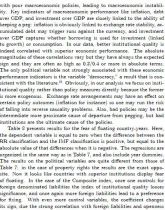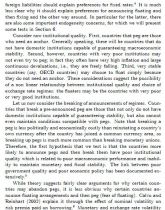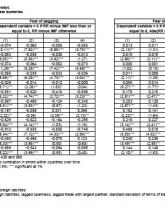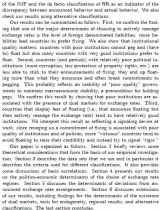Prezentácia: Choosing (and reneging on)
Zobraziť detaily | ObľúbenýThe difficulty of maintaining pegs is a well-known phenomenon. Recently, a different type of deviation from announcements has been quite common: Calvo and Reinhart (2002) show that while many countries claim to be floating, in fact they peg, experiencing what has been labeled “fear of floating.” Our goal is to identify what features of countries make them “fearful” of following through with actions what they announce in words, thus reneging on announcements of exchange rate regimes. Deviations from preannounced regimes are likely to imply increased uncertainty in currency markets, risk premia charged on liabilities issued in domestic currencies, and difficulties in conducting domestic monetary policy. We show below that different forces lead countries to announce a peg and then float and vice versa. Countries with inadequate institutions, associated with poor macroeconomic management, are incapable of holding pegs; countries with superior institutions tend to display “fear of floating,” perhaps in an attempt to signal their type. We begin by briefly reviewing the question of the choice of exchange rate regimes, that is, why certain countries choose to float or to peg. We build upon a recent literature, which includes Calvo and Reinhart (2000), Frieden et al. (2000), Hausmann, Panizza and Stein (2000), Levy-Yeyati, Sturzenegger and Reggio (2003), and Obstfeld and Taylor (2002), amongst others.1 Explaining the choice of exchange rate regimes is difficult from the start, since a classification of regimes is problematic. The IMF has traditionally produced a classification which is “de iure,” that is, it is essentially based on what the countries say that they do. For example in certain periods several countries are classified as floating even though their exchange rate never moves vis-a-vis, say, the US dollar. Various attempts have been made to adjust this classification or to offer altogether new ones. Some studies — like Ghosh et al. (1997), and Frieden et al. (2000) — adjust the IMF classification. The IMF itself has recently changed its classification (IMF 1999). Levy-Yeyati and Sturzenegger (2003) provide a classification based on data on exchange rates and international reserves. Shambaugh (2003) offers another classification based on statistical analysis of the exchange rate itself. Reinhart and Rogoff (2003) (RR) take a more radical approach: they classify regimes based upon a statistical analysis of the observed behavior of exchange rates, and consider explicitly the fact that many countries - even in the developed world - have or had dual exchange rate markets. In our analysis, we use the difference between the de iure classification.




